Package publishing to Intune
Package publishing to Intune
If you want to distribute a package created with the Packaging PowerBench through Microsoft Intune, you need to perform the following steps:
- You need to export the package to the format of Intune
- You need to publish the exported package in your Intune tenant
To publish a package exported to Intune format in your tenant, proceed as follows:
- Optionally, open the PPB package that you have previously exported to Intune format. The PPB remembers the exported packages and the target directory of the export, so that the package to be registered is automatically suggested to you later.
- Now select "Publish Package" from the "Import / Export" section of the "Tasks" ribbon. If the button is disabled, you must first enable and configure at least one of the available integrations.

- You are welcomed by the Publish Package Wizard, on which you please press the "Publish a Microsoft Intune-Package" button.
|
Note: The button "Publish a Microsoft Intune-Package" is available only, if the Intune Integration is enabled and configured. |
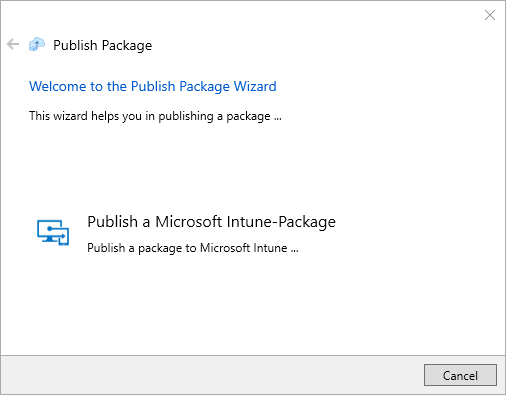
- On the following wizard page you can see the connection data entered in the configuration of the Intune integration. You can use the "Test connection" link to check whether the connection data has been entered correctly and is working. Confirm the connection data by pressing "Next".
|
Note: You can also enter alternative connection data here if, for example, you want to register a package in another tenant on a test basis. If you overwrite the data here, the configured integration settings will not be changed. |
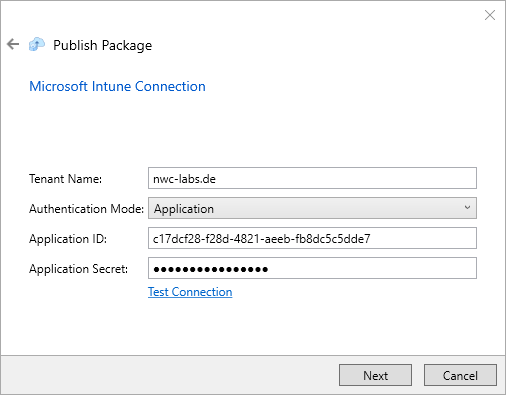
- Confirm the preselected .intunewin file or select the .intunewin file to be published using the "..." button. The "Installation file" label tells you which PPB package the selected file contains. Confirm the selection with "Next".
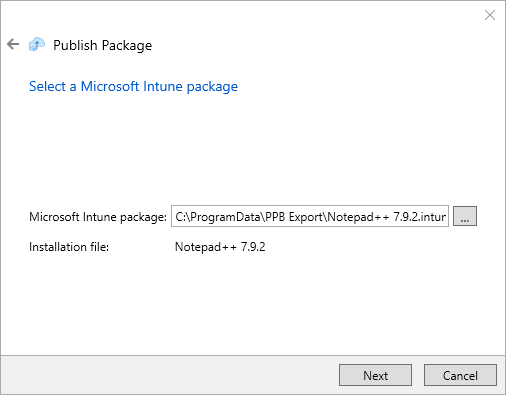
- On the following wizard page, you specify the settings and values with which the package is registered in Intune. You must or can enter the following values:
|
Name (mandantory) |
Name of the application as it should appear in the Company Portal |
|
Description (mandantory) |
Brief description of the application |
|
Publisher (mandantory) |
Vendor or author of the application |
|
Version (optional) |
Version of the application |
|
Category (optional) |
One or more categories under which the application is listed in the Company Portal |
|
Logo (optional) |
Path to the icon of the application that will be displayed in the Company Portal |
|
Featured app in Company Portal (optional) |
If activated, the app is displayed as featured app in the Company Portal |
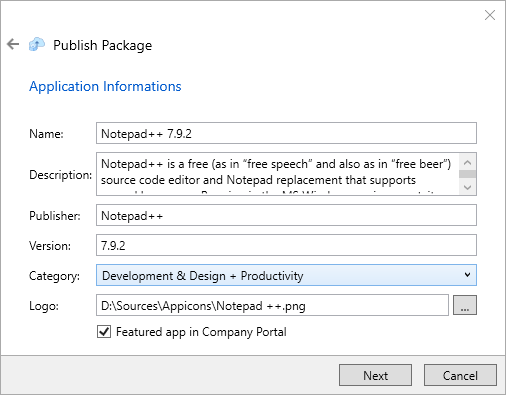
- On this page you select for which operating system architectures the package is valid and which Windows 10 version at least is required for the package. Starting with PPB version 3.0, you can also specify here whether you want to use the default detection rules (i.e. with which ID and which revision the detection rules are created, which the Intune Management Extension can use to detect in the registry whether the package has been successfully installed) or custom detection rules. In the case of custom detection rules, all the criteria that you can also find in the Microsoft Endpoint Manager portal are available to you. In addition, you can also specify here that the user who is logged in is allowed to interact with when the script is executed. Confirm your selection with "Next".
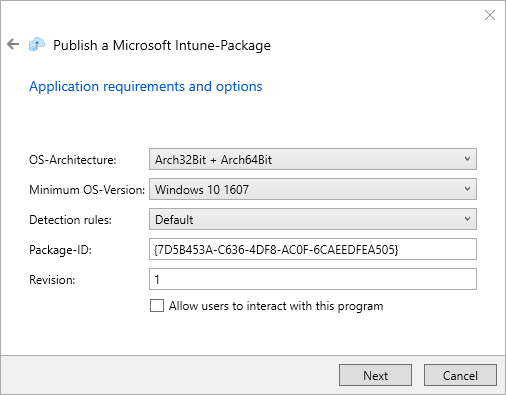
- On the following wizard page you will see a summary and can now complete the registration by clicking "Finish".
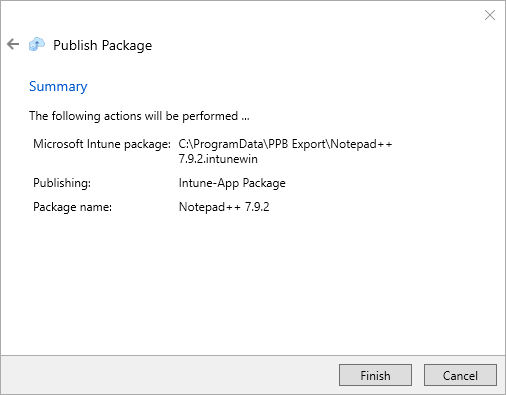
- Finally, the performed actions are listed again and you can close the wizard.
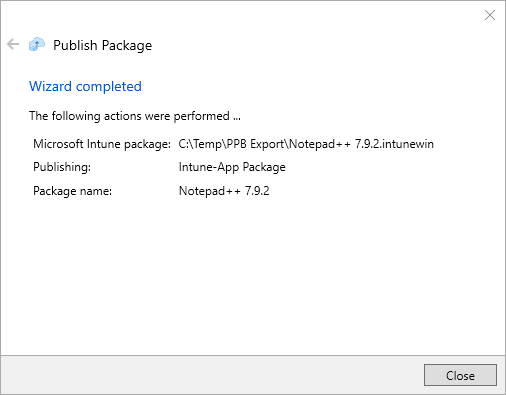
The package is now available in the Microsoft Intune portal at https://endpoint.microsoft.com and can be assigned to your devices there.